Authors:
ABSTRACT
Aim
To analyse the presence and prevalence of gnathologic problems in a sample of children, candidate for orthodontic treatment, and evaluate the relationship between psychological factors and gnathological problems. The purpose of this study was also to evaluate a simple protocol with specific psychological test and a questionnaire for the rapid diagnosis of gnathologic problems, useful for possible screening studies on a wider population.
Material and methods
Study Design: Observational, cross-sectional study. Among the patients coming for a first orthodontic evaluation 106 children, aged between 8 and 16 years, were examined. A complete orthodontic evaluation was performed in all patients; the RCMAS (Revised Children’s Manifest Anxiety Scale) was used in the study to test the psychological condition, while the selected test for the diagnosis of gnathologic problems was the Fonseca Test. The prevalence of temporomandibular disorders (TMD) was evaluated with descriptive statistical analysis, and the eventually present correlation with a positive psycological test for anxiety has been evaluated with correlation parameters: c2 test of Pearson, and Cramer’s V index.
Results
The mean age of the children was 10.74 years. Females accounted for 55.66% of the total compared to 44.34% males. Signs and symptoms of TMD were present on average in 82% and 32% respectively. A remarkable amount of children also showed signs of psychological problems, mostly represented by anxiety. Positive correlation resulted between TMD (Fonseca scores) and increased overbite. Cross-correlations have been obtained, tested with Pearson c2 test and Cramer’s V index, between level of anxiety, muscle pain on palpation, bad habits, and headache. The Class II subdivision molar class and altered canine relationship have been related to the presence of articular noise.
Conclusion
The protocol largely respected the need for speed of administration, comprehensiveness and reliability that we set out to achieve. Limited correlations have been assessed between occlusal conditions and positivity to the administrated tests. Further studies are desirable to increase the sample population.
PLUMX METRICS
Publication date:
Issue:
Vol.19 – n.4/2018
Page:
Publisher:
Cite:
Harvard: V. Romani, R. Di Giorgio, M. Castellano, E. Barbato, G. Galluccio (2018) "Prevalence of craniomandibular disorders in orthodontic pediatric population and possible interactions with anxiety and stress", European Journal of Paediatric Dentistry, 19(4), pp317-323. doi: 10.23804/ejpd.2018.19.04.13
Copyright (c) 2021 Ariesdue

This work is licensed under a Creative Commons Attribution-NonCommercial 4.0 International License.
